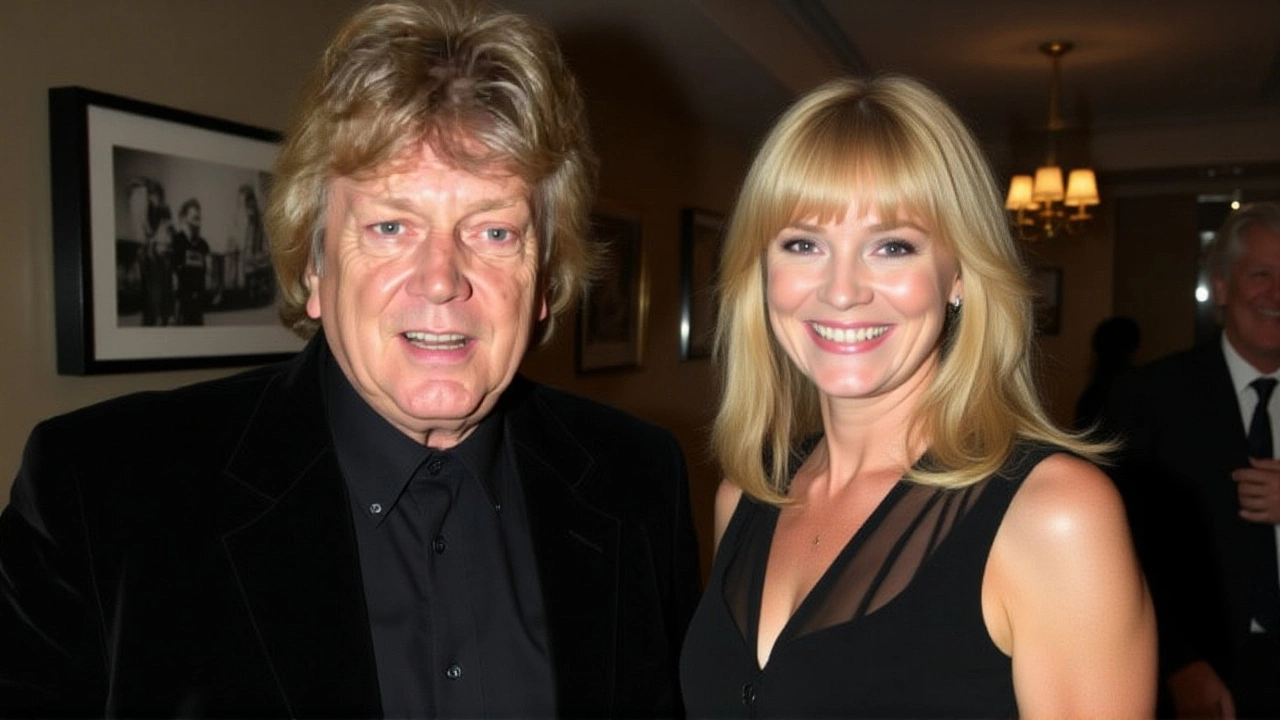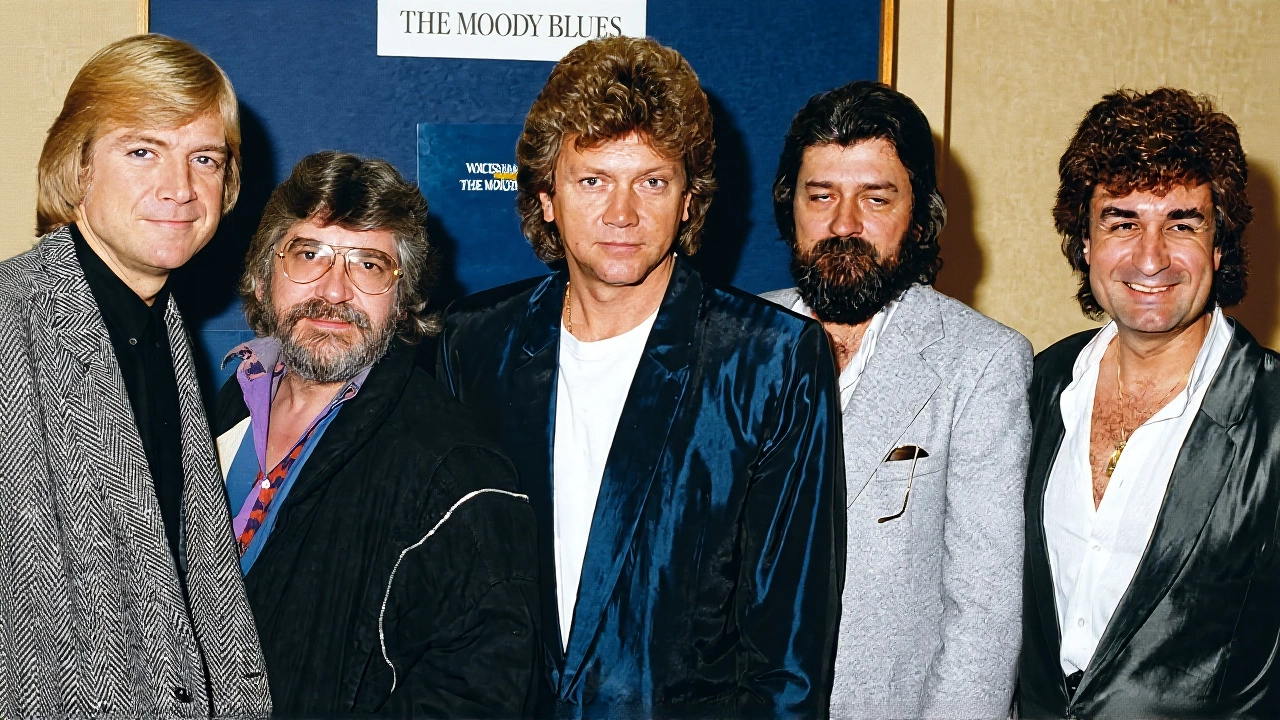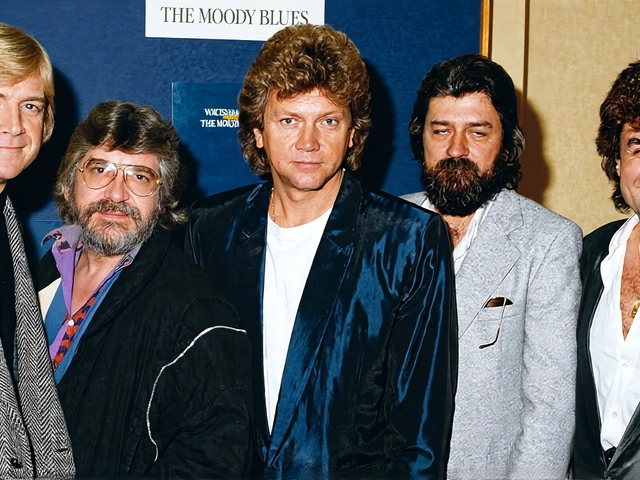When Justin Hayward, lead vocalist and guitarist of The Moody Blues, teamed up with bassist John Lodge to drop Long Distance VoyagerLondon in May 1981, the music world got a surprise: the band’s first U.S. #1 album in nearly a decade, and a fresh burst of radio‑friendly prog‑rock.
Background and Line‑up Changes
By late 1978 the original keyboard wizard Mike Pinder had left the band after a bitter split over creative direction. His departure left a void that many thought the group could never fill. Enter Patrick Moraz, a Swiss virtuoso who’d cut his teeth with Yes and the progressive outfit Refugee. Moraz’s synth‑heavy style promised a modern edge, but fans wondered if the signature Moody Blues sound would survive.
John Lodge later recalled, “We weren’t sure at first if Patrick would mesh with our vibe, but his phrasing and the way he handled the Mellotron‑like textures gave us a fresh pallet without erasing our identity.”
Recording Sessions and Production
The band booked their own Threshold Studios in London for early 1981. originally slated for October 1980, the sessions slipped by four months while the members “re‑thought what we were doing,” as Lodge put it. That pause, though stressful, turned out to be a blessing: “By the time we hit the tape, the songs felt lived‑in, the energy was there,” he said.
Producer Pip Williams—known for his work with Alvin Stardust and a brief stint with Graham Parker—brought a glossy, radio‑ready sheen without stripping away the band’s atmospheric leanings. “Pip made the entire process painless and gave the music a real lift,” Lodge remembered. Hayward added, “He updated us without changing who we were. It was a breath of fresh air after the ‘Octave’ era.”
The recording crew included engineer Greg Jackman and a string section from the New World Philharmonic, arranged by Williams. The orchestration gave tracks like “The Voice” a cinematic punch that resonated with both FM rock stations and the emerging MTV audience.
Chart Success and Singles
When the album hit stores on May 1, 1981, it vaulted to No. 1 on the Billboard 200, making it the band’s second American chart‑topping effort after 1972’s Every Good Boy Deserves Favour. In the U.K., it peaked at No. 7 on the Albums Chart.
- "Gemini Dream" – Billboard Hot 100 peak #12
- "The Voice" – Billboard Hot 100 peak #15
- "Talking Out of Turn" – #65 U.S., #27 Canada
- "Meanwhile" – #11 on Billboard Mainstream Rock
- "22,000 Days" – #38 on Billboard Mainstream Rock
These singles earned heavy rotation on both pop and album‑oriented rock (AOR) stations, giving the band a new generation of listeners. The success was especially remarkable because the band had been labeled “soft‑rock relics” by some trade magazines just a year earlier.

Critical Reception and Legacy
Contemporary reviews were mixed. Rolling Stone praised the production polish but questioned the lyrical depth, while Melody Maker lauded the “space‑age optimism” of the title track. Retrospectively, critics agree that the album marked a pivotal moment in the band’s evolution, proving that progressive rock could adapt to the early‑‘80s synth‑driven landscape.
The Voyager theme – a nod to NASA’s 1977 twin probes – gave the record an extra layer of intrigue. “The idea was to parallel humanity’s quest into the unknown with our own musical journey,” Hayward explained in a 1981 interview. Though only a handful of songs directly reference the spacecraft, the title and album art (featuring a stylized starfield) cemented the connection.
Musicians continue to cite the record as an influence. R.E.M.’s 1990 single “Texarkana” reportedly borrowed the bright, guitar‑driven chorus structure from “Gemini Dream.” In 2015, indie band Foals mentioned the album’s “effortless blend of prog atmosphere and pop hook” during a BBC interview.
What Comes Next?
Fresh off the Long Distance Voyager high, the Moody Blues returned to the studio for The Present in 1983. That follow‑up, however, failed to capture the same momentum, slipping to a modest #115 on the Billboard chart. Still, the Voyager era proved that the band could weather lineup upheavals, label disputes, and shifting musical trends while staying relevant.
Today, the album lives on in streaming playlists, classic‑rock radio rotations, and the occasional vinyl reissue. Its legacy is a reminder that “the further things are taken on a personal level, the more they remain the same,” as John Lodge put it – a line that feels as true now as it did four decades ago.

Key Facts
- Release date: 1 May 1981
- Label: Threshold Records
- Producer: Pip Williams
- Peak US Billboard 200: #1
- Top‑20 US singles: “Gemini Dream” (#12), “The Voice” (#15)
Frequently Asked Questions
How did Patrick Moraz’s arrival change the band's sound?
Moraz introduced a more synth‑centric texture, using the Yamaha CS‑80 and Moog to add a futuristic edge. While the classic flute‑and‑string blend remained, his keyboard solos on tracks like “22,000 Days” gave the album a brighter, more radio‑friendly tone that appealed to early‑80s audiences.
Which singles from the album reached the highest chart positions?
"Gemini Dream" cracked the U.S. Billboard Hot 100 at #12, while "The Voice" peaked at #15. Both songs also entered the Top 20 of the U.S. Mainstream Rock chart, securing heavy rotation on rock stations across the country.
What role did the Voyager spacecraft theme play in the album?
The title references NASA’s Voyager probes, symbolising an outward journey and the search for new horizons. Although only a few tracks directly mention space travel, the concept inspired the album’s atmospheric synths and lyrical motifs about exploration and timelessness.
How was the album received by critics when it first came out?
Reviews were split; some praised the polished production and catchy hooks, while others felt the lyrical content was lightweight compared with earlier prog epics. Over time, the consensus shifted to viewing the record as a successful adaptation to the 1980s pop‑rock climate.
In what ways has ‘Long Distance Voyager’ influenced later artists?
Bands like R.E.M. and Foals have cited the album’s blend of lush strings and synth‑driven melodies as an inspiration. The track “Gemini Dream” is often mentioned for its punchy chorus structure, a template many alternative rock groups emulated in the late‑80s and early‑90s.






Post A Comment